If your lawn is lifeless or spongy, you may have grub worms. Grub worms, larvae of various beetle species, may severely damage lawn or grass by eating its roots. If unchecked, grub worms may devastate your landscape. In this article, we’ll explore different methods for getting rid of grub worms in your lawn.
How to Get Rid of Grub Worms in Your Lawn?
Natural control techniques such as nematodes are used for grub worm management and they do not affect humans, animals, or the environment. They are well suited approach to get rid of grub worms. Nematodes are tiny worms that you may spread on your lawn to get rid of grub worms.
What Are Grub Worms?
Grub worms are produced by the family of scarabs. They have six front legs and a creamy-white body. They are not worms. By consuming the roots and thatch of turfgrass, grub worms destroy lawns. If unchecked, grubs will chew through lawns.
The most grub worms are produced by Japanese, green June, and annual white beetles. Midsummer beetles lay their eggs in the ground, where they hatch into tiny, white grubs. The lawn is then harmed by grubs eating the turfgrass roots. Massive infestations could damage the grass and call for sodding or reseeding.
The fight against grub worms is multifaceted. Find grub worms in the yard first. Root damage is indicated by brown areas of grass that are easy to pull up. Look for white grubs in a tiny piece of grass that has been dug up.
If grub worms have been confirmed, many methods may be used to get rid of them. The best remedies are chemical ones, but they harm soil organisms and the ecology. Infestations may be controlled by nematodes and milky spores, although it takes years of repeated treatments.
Grub worm infestations may be avoided with appropriate lawn management. It’s necessary to fertilize, irrigate, and mow the lawn. By reducing thatch and enhancing soil drainage, grub worms may be avoided.
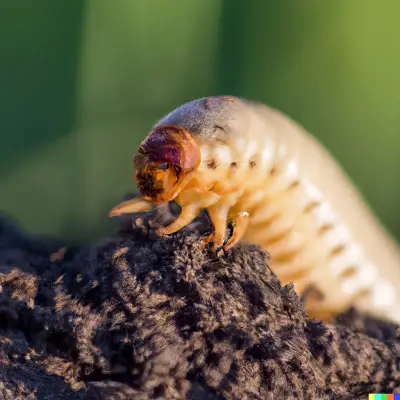
| Specification | Description |
|---|---|
| Size | Between 1 and 2 inches long, and 0.5 to 1 inch wide |
| Color | Dark brown or black head and a lighter brown or cream-colored body |
| Texture | Smooth and firm |
| Habitat | Soil-dwelling, found in compost heaps, lawns, and gardens |
| Diet | Feed on plant roots and decaying organic matter |
| Life cycle | Complete metamorphosis with egg, larval, pupal, and adult stages |
| Predators | Birds, rodents, and other insectivores |
| Benefits | Important decomposers in ecosystems, provide food for wildlife |
| Risks | Can damage crops and turfgrass, may attract unwanted wildlife to gardens |
| Control | Biological controls such as nematodes or bacterial sprays, or physical controls such as handpicking or applying insecticides |
What attracts grubs to your lawn?
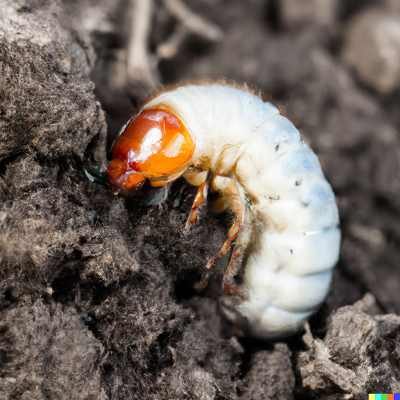
Grubs may live in any kind of turf grass, although they are attracted to ryegrasses in particular. In June and July, grubs are drawn to moist lawns because these are ideal circumstances for egg laying. Animals may be drawn to a grub population that is expanding in your grass if you see an increase in their activity in your yard.
The quality of the soil in your yard also plays a big part in grub attraction. Grubs like soil that is rich, wet, well-drained, and has a healthy, light clay to loam consistency. These traits increase the likelihood that grubs will find your lawn to be a desirable location to deposit their eggs.
Maintaining a healthy grass with appropriate watering, mowing, and fertilizer procedures is crucial to preventing grub infestation. Moreover, keep your lawn’s thatch layer under control by clearing up extra trash and dead grass, which may provide the perfect habitat for grub growth.
Signs of Grub Worm Infestation
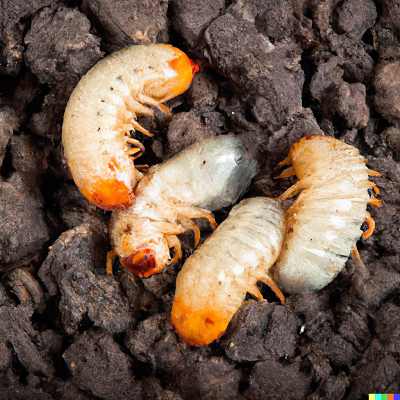
There are certain signs to watch out for if you’re unsure if you have a grub worm infestation. Indications of a potential grub worm infestation include dead areas on your lawn, spongy grass underfoot, and increased bird activity (birds eat grub worms).
Prevention
It is simpler to prevent a grub worm infestation than to eradicate one. The greatest defense against grub worms is a healthy grass. Since the grass is thicker and more resilient to grub worm damage, a well-kept lawn is less likely to have infestations of grub worms.
You may employ preventative substances in addition to keeping a healthy grass to keep grub worms at bay. To suppress grubs that might harm turf in the autumn, the substance chlorantraniliprole should preferably be administered in April or May since it would take longer for the substance to get to where the grubs will be eating in July.
Getting Rid of Grub Worms
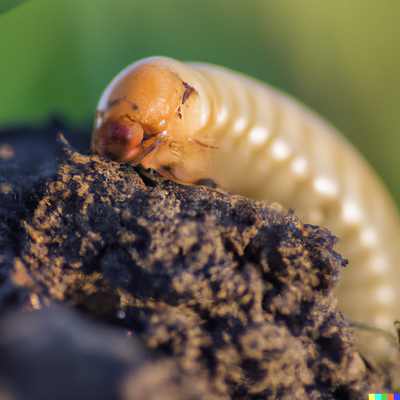
If you have a grub worm infestation, there are several ways to get rid of them.
Natural Control Methods
Natural control techniques are one approach to get rid of grub worms. Nematodes are tiny worms that you may spread on your lawn to get rid of grub worms. Nematodes are efficient in grub worm management and do not affect humans, animals, or the environment.
Here you can find the best Nematodes to naturally control grub worms.
Chemical Control Methods
It may be necessary to apply chemical control techniques if you have a serious infestation. Two chemical substances that may be used to destroy grub worms are carbaryl and trichlorfon. When the grub worms are near the surface, in the spring or autumn, these substances should be used.
here is the product that has carbaryl and trichlorfon to control grubs : check here.
Cultural Control Methods
In order to reduce the appeal of your grass to grub worms, you might use cultural management approaches. One method to do this is to sparingly but thoroughly water your grass. The grass roots will be encouraged to grow deeper as a result, making them less vulnerable to grub worm damage.
Removing Infested Grass
If the infestation is bad enough, you may need to pull out the affected grass and grow fresh grass in its place. While extreme, this action can be required if the infestation is severe.
for removing infested grass – check out the Grass Trimmer Cordless
How to get rid of grubs in lawn naturally?
we will discuss seven effective treatment options to get rid of grubs naturally.
- Introducing grubs’ natural predators will help them get eaten. Natural grub predators include birds, moles, shrews, and skunks. You may naturally manage the grub population by luring these creatures to your yard. By providing nesting boxes, food, and water, you may also establish a home for them.
- Minimize soil moisture since grubs like it. You may make the atmosphere less welcoming for them by lowering the quantity of water your grass gets. To promote the development of deep roots, water thoroughly but rarely, letting the soil dry out in between applications.
- Usage milky spore: This bacterium infects and kills grubs naturally. It is not harmful to people, animals, or the environment. Applying milky spore to your lawn in the spring or autumn will keep it healthy for many years. here you can get milky spore from my recommend store.
- Use neem oil or Azadirachtin: Derived from the neem tree’s seeds, neem oil is a natural insecticide. It keeps grubs and other pests away while protecting helpful insects. Neem oil contains a substance called azadirachtin that is very effective against grubs. You may apply neem oil and azadirachtin on your grass to get rid of grubs.
- Introducing helpful nematodes: Beneficial nematodes are tiny worms that hunt down and devour pests that live in the soil. They are not harmful to people, animals, or the environment. You may buy beneficial nematodes online or at a garden shop, then apply them to your grass as directed.
- Borax is a natural mineral that may be used to make a grub-killing solution. Early in the morning or late as night, apply 1 cup of borax and 1 gallon of water on your lawn. After using borax, be sure to properly water your grass.
- Dethatch and aerate your lawn: By enhancing the health of your grass, dethatching and aerating your lawn may help avoid grubs. Dethatching eliminates the layer of decaying grass and roots that might serve as a grub habitat. Water and oxygen may enter the soil thanks to aeration, which encourages the development of deep roots and lessens the possibility of grub infestation.
Get the best insecticide for grubs permanent solution check here.
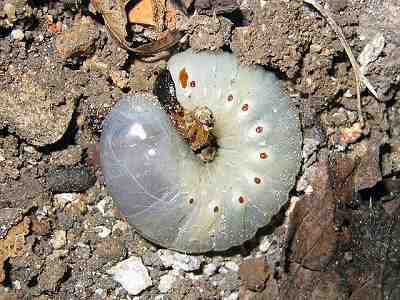
One alternative method for chemical control involves eliminating mature beetles prior to their ability to lay eggs.
What is the best time to treat for grubs?
The best time to treat grubs is late may in summers, when the immature, smaller grubs are most vulnerable to nematodes and other natural predators. Experts agree that now is the best time to start treatment since the grubs are smaller and simpler to eliminate. Nonetheless, the window for spring applications is also feasible, albeit it is smaller and might be challenging to plan well.
Depending on the treatment, April through early October is the optimum period to apply a treatment if you want to prevent grubs from harming your lawn in the future. By doing this, you can be confident that you’ll have plenty of time to administer the treatment and that it will work to reduce the grub population in your grass.
It’s crucial to take the active substances and their efficacy against grubs into account when selecting a therapy. Nematodes, pesticides, and naturally occurring predators are some of the most often used therapies. Nematodes are excellent choices for environmentally aware homes since they are natural predators that go after and destroy grubs. On the other side, chemical treatments such as insecticides may not be as ecologically friendly but are still capable of killing grubs. Last but not least, introducing wild animals and birds as natural predators may help reduce the number of grubs on your grass.
How do you kill grubs without killing grass?
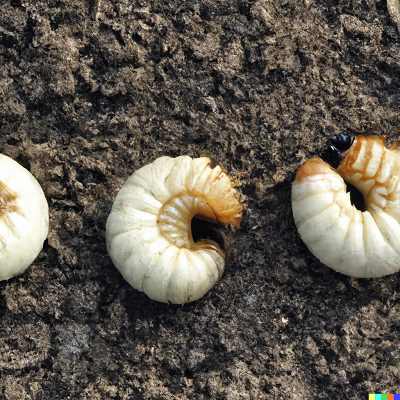
If you want to get rid of grubs without harming your grass or the environment, there are several natural treatments you can try.
- Bring in some of the grubs’ natural predators, which include birds, moles, shrews, and skunks. You may naturally manage the grub population by luring these creatures to your yard.
- Minimize soil moisture since grubs like it. You may make the atmosphere less welcoming for them by lowering the quantity of water your grass gets. To promote the development of deep roots, water thoroughly but rarely, letting the soil dry out in between applications.
- Usage milky spore: This bacterium infects and kills grubs naturally. It is not harmful to people, animals, or the environment. Applying milky spore to your lawn in the spring or autumn will keep it healthy for many years.
- Usage neem oil or Azadirachtin: Derived from the neem tree’s seeds, neem oil is a natural insecticide. It keeps grubs and other pests away while protecting helpful insects. Neem oil contains a substance called azadirachtin that is very effective against grubs. You may apply neem oil and azadirachtin on your grass to get rid of grubs.
- Introducing helpful nematodes: Beneficial nematodes are tiny worms that hunt down and devour pests that live in the soil. They are not harmful to people, animals, or the environment. You may buy beneficial nematodes online or at a garden shop, then apply them to your grass as directed.
- Borax is a natural mineral that may be used to make a grub-killing solution. Early in the morning or late as night, apply 1 cup of borax and 1 gallon of water on your lawn. After using borax, be sure to properly water your grass.
- Dethatch and aerate your lawn: By enhancing the health of your grass, dethatching and aerating your lawn may help avoid grubs. Dethatching eliminates the layer of decaying grass and roots that might serve as a grub habitat. Water and oxygen may enter the soil thanks to aeration, which encourages the development of deep roots and lessens the possibility of grub infestation.
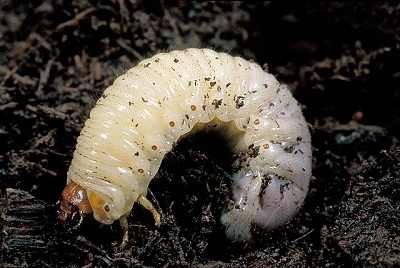
Will grass come back after grubs?
No, dead grass won’t regrow on its own after grubs; reseeding is the only method to revive it. Certain portions may need cleaning, soil addition, and seeding. To fix certain places, however, may just need slice-seeding.
To get your grub-damaged lawn back to its lush green state, fix it in the autumn or early spring. Your lawn has to be repaired by raking off the dead grass, fertilizing it with organic matter, and then seeding it. To stop additional harm to the grass, you should also water the lawn often and refrain from cutting it too short.
While the grass may still come back and heal itself from this point, take care not to remove too many of the runners. Much of the grass will be destroyed after a grub infestation, so you’ll need to reseed to encourage fresh growth. To make the grass easier to roll back into place after being flipped, wet it. There is a significant likelihood that your grass will re-root if it is usually healthy, exactly like sod.
FAQ about How to Get Rid of Grub Worms in Your Lawn
What month are grubs most active?
Grubs are most active in September and the first few days of October, according to specialists. You could see more activity from skunks, birds, and other grub-eating creatures during this time. To get to the grubs, these creatures often trample through areas of grass, leaving your lawn appearing mangled and worn.
How can you tell whether you have grub damage or live grubs? There are a few indicators to watch out for. Brown patches of grass that are simple to take out of the ground may be caused by grub damage. As a result of the grubs’ attraction, you could also see more birds and other creatures tearing up your grass. Lastly, grubs are most likely present if you dig up a tiny area of grass and find white larvae with a C-shape.
It’s critical to treat for grubs at the appropriate time in order to stop additional damage to your grass. While the grubs are active, in September or October, experts advise using grub control treatments. A well-liked granular trichlorfon 9.3% product that may be utilized at this time is Bayer Advanced 24 hr Grub Killer Plus. To get rid of grubs, you may also apply curative pesticides in the spring or autumn.
Another option is to use preventative pesticides, however this must be done preferably between June and July, just before the bug eggs hatch. A lawn care expert should be consulted to identify the best course of action for your lawn since using grub control solutions too early or too late might render them useless.
How many times a year should you treat your lawn for grubs?
To avoid harm to your grass, it’s critical to control grub infestations in your lawn correctly. Depending on the kind of treatment being used and the degree of the infestation, you should treat your lawn for grubs often.
Nematodes are a successful grub treatment. They are tiny worms that eat the grub larvae of certain species. Nematodes may need to be applied every two weeks until the grub infestation is under control if you’re using them to treat one. Nematodes should be administered two to three times each season for prophylactic usage.
Insecticides are another common grub treatment strategy. The product and the manufacturer’s recommendations will determine how often pesticides should be used. Depending on the chemical, grub killers may be used up to three times annually. Using the pesticide too often might have unfavorable effects, therefore it’s crucial to adhere to the directions on the product label.
Another approach for treating and avoiding grub infestations is preventative pesticides. Depending on the product, they may be used anytime between May and mid-August. To protect your grass from harm, it’s crucial to use preventive pesticides at the appropriate time.
Unless there are visible symptoms of grub damage, you generally do not need to use grub control yearly. It could be okay to skip a year of treatment, but if any beetles have placed their eggs in the soil of your lawn, the infestation may come back. To avoid harm to your grass, it’s crucial to keep an eye out for grub symptoms on your lawn and to treat them as soon as possible.
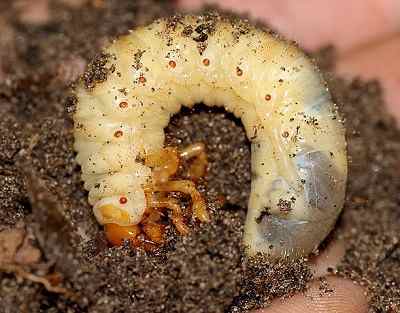
Will grass come back after grubs?
Grubs are a typical lawn bug that, if ignored, may seriously harm your grass. If you have grub infestation-related areas of dead turf on your lawn, you may be wondering whether the grass will regrow on its own. Regrettably, the answer is no. Dead grass patches must be physically fixed since they won’t regrow on their own.
You’ll need to reseed the dead sections of your lawn to fix the damage caused by grubs. The sort of repair required will depend on the severity of the damage. It could be necessary to replenish dirt, reseed, and scrape certain spots clean. Some parts may merely need to be repaired via slice-seeding. In either case, human action is required to recover dead patches.
The optimum times to rehabilitate grub-damaged grass are fall or early spring. Rake off any dead grass before reseeding so that the new seed has a clean surface on which to take root. After removing the dead grass, you may reseed the area using a seed mixture suitable for your lawn’s particular requirements.
It’s important to remember that you may still fix your lawn while the grub treatment is active. You may still reseed the dead areas while the pesticide treatment for the grub infestation is active. But before reseeding, it’s crucial to wait the recommended period of time following treatment and adhere to the product’s label’s directions.
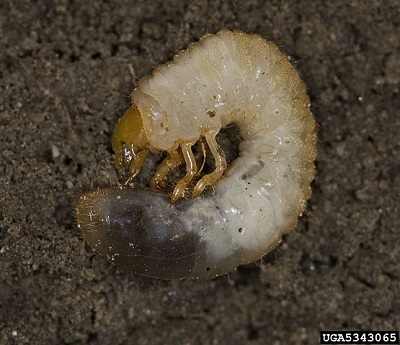
What kills grubs right away?
Carbaryl and trichlorfon are two substances that are regarded as curative to kill grub. These two pesticides are transient substances that eliminate all grub life stages. If there are large quantities of grubs in the autumn and in the spring before early May, these are your only alternatives. Both pesticides must be used and handled carefully since they are hazardous. Before applying any pesticide to your lawn, be sure to thoroughly read the label instructions.
Beneficial nematodes are a safe and pet-friendly solution if you’re seeking for a natural approach to get rid of grubs. Little, parasitic worms called nematodes dwell in the soil and eat grubs. With a sprayer or watering can, they are applied to the grass. When the kind of grubs that nematodes suppress are active in the soil, nematodes must also be used. Nematodes may need to be administered every two weeks until the infestation goes away if they are being used as a treatment. Nematodes should be administered two to three times each season for individuals who utilize them as a prophylactic measure.
Another all-natural method for managing Japanese beetle grubs is milky spore disease. The bacterium that infects and kills the grubs is the cause of this illness. By spreading the bacteria on the grass in a powder or granular form, milky spore disease is transmitted. It is a long-term remedy that may take a few years to become effective since the illness requires time to grow and build up in the soil.
What is the best month to put down GrubEx?
When grubs are ready to hatch, the optimal period to plant GrubEx is often from April to mid-July. By focusing on the larvae of several insects at this period, the grub preventive solution may assist in preventing grub damage.
The ideal time to apply a grub killer to your lawn if you want to halt grub damage right away is when you first see symptoms of damage. Brown spots, wilted or dead grass, and loose turf are indications of grub damage. Your grass will remain healthy if you use a grub killer as soon as you can to stop future harm.
It is important to remember that depending on the product and the area, the ideal time to apply grub control products might change. For instance, in certain areas, using GrubEx is most effective between May and early August, just before the eggs are deposited. For optimum results, it is crucial to thoroughly read the product label and adhere to the manufacturer’s recommendations.
In general, GrubEx should be used as a preventative grub management method prior to the grubs hatching. On the other side, there are therapeutic methods that destroy all grub life stages, such as carbaryl and trichlorfon, which are transient substances. Only when large populations of grubs are present in the autumn and in the spring before early May are these pesticides effective.
Want to use it check out the GrubEx from here.
Conclusion
I hope you find the answer on “How to Get Rid of Grub Worms in Your Lawn”. Grub worms may kill grass if not controlled. Preventing grub worm infestations is easier than eliminating them, so maintain your lawn healthy and use chlorantraniliprole. If you have grub worms, natural, chemical, cultural, and grass removal techniques work well.
You may also like to read these similar articles:
Are Grub Worms Dangerous? Debunking the Myths
What Do Grub Worms Turn Into? A Comprehensive Lifecycle Guide
